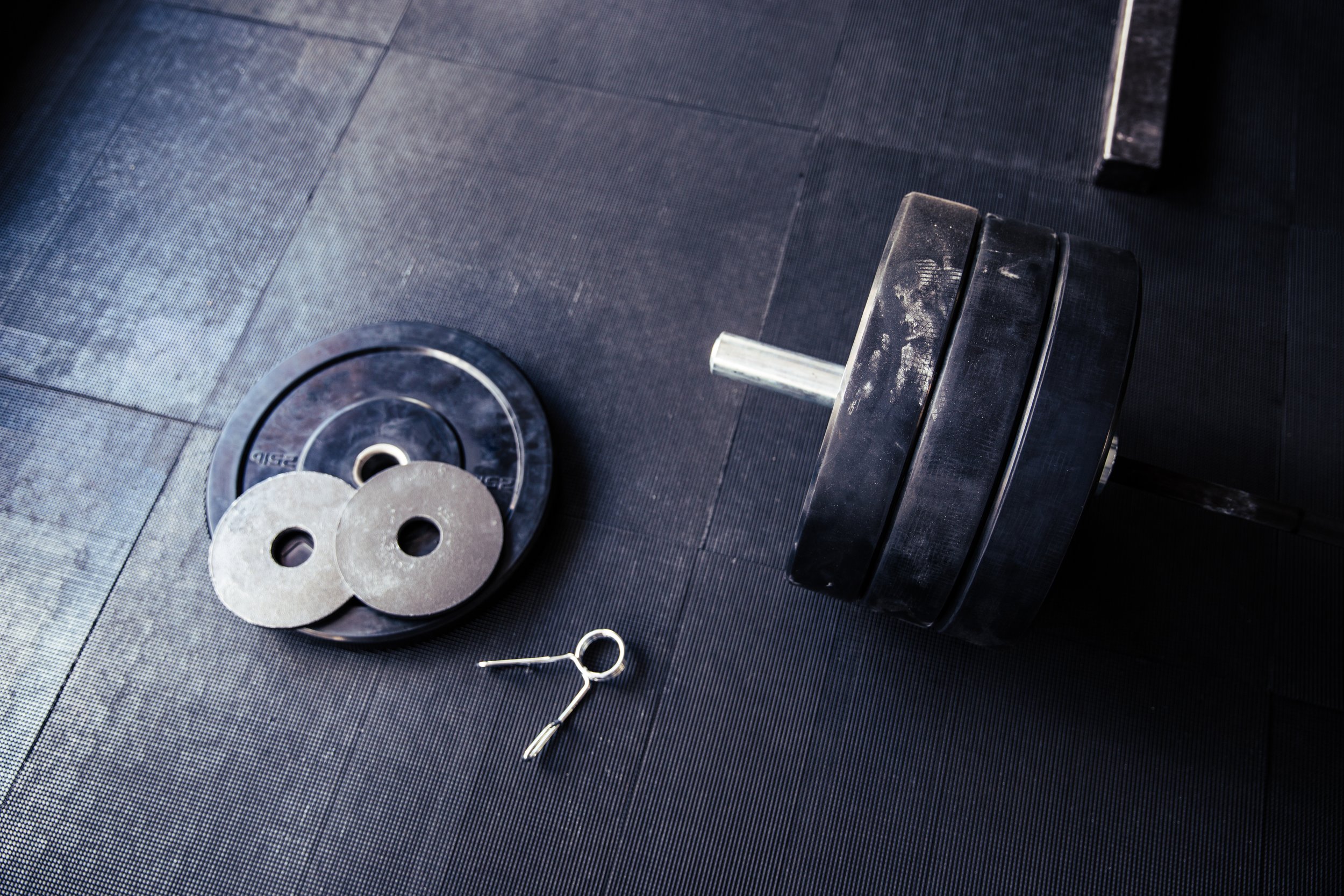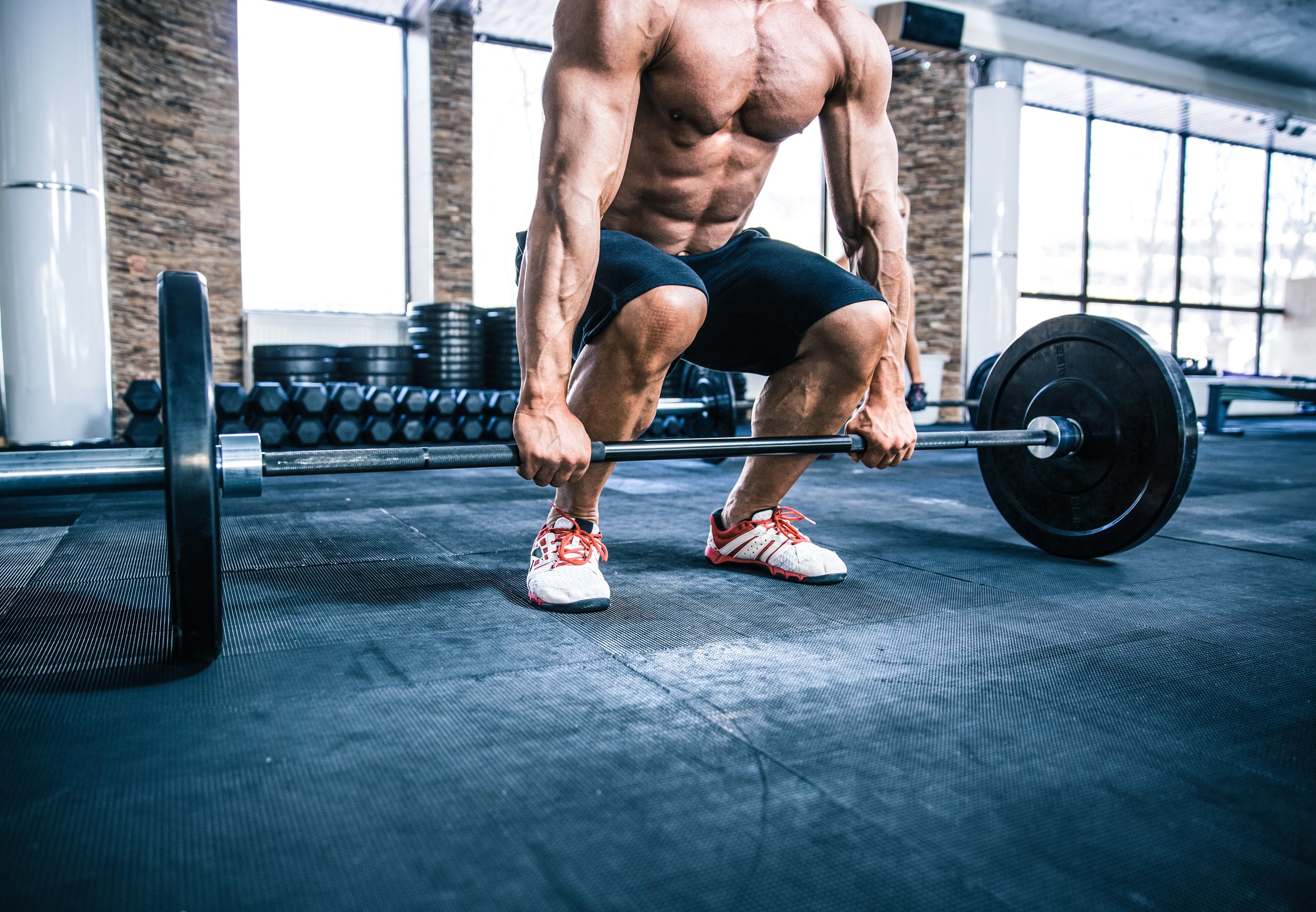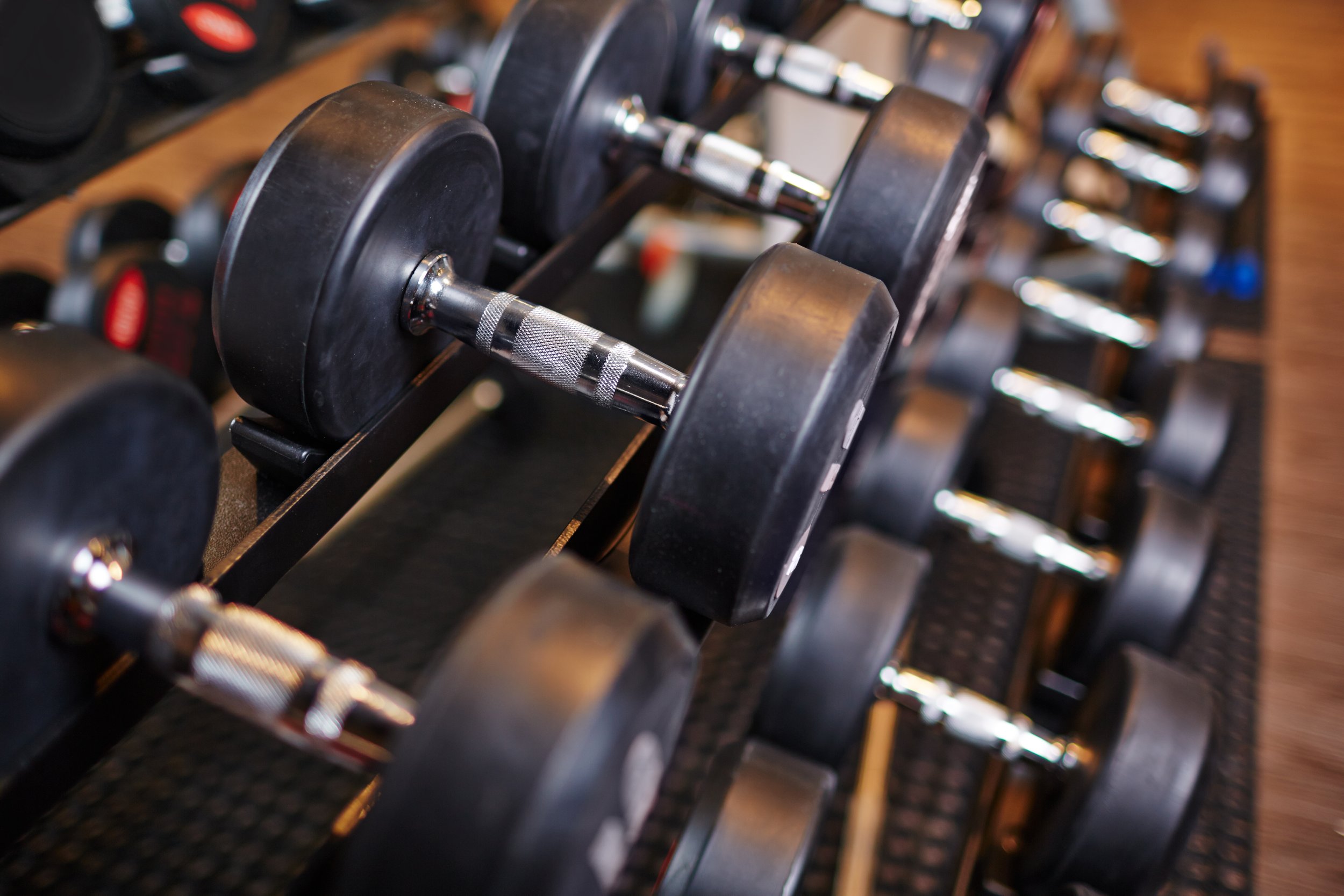The Smith Machine Is Sometimes Better Than The Squat Rack
Takeaway Points:
The smith machine is a machine version of the free weight squat rack.
This machine gets a lot of hate, but also has some surprising advantages.
Like any tool in the toolkit of a good exerciser, the smith machine shouldn’t be ignored.
When I started out as a trainer and coach, there was a lot of hate in internet circles for machines, and a big push towards “functional fitness” - fitness that didn’t just involve building muscle, but also building strength by working in movement patterns that were more likely to have carryover to the real world.
This coincided with the rise of CrossFit, which did a lot to popularize the concept of being generally well rounded, and “functionally fit”.
In particular, one machine - the smith machine - gets a lot of hate. I want to dig into its usage a bit today, and why this hatred is generally misguided.
Machines Are Fine
Lots of research has since validated that machines are fine, and are a perfectly valid training method. You can build just as much muscle while training on machines, and while the strength that you build on machines will not have perfect carryover to more complex movements, the added muscle and strength you build certainly doesn’t go to waste.
This means that if you’re someone who trains because you want to be good at particular (barbell) lifts, then naturally you’ll get better results out of primarily training those lifts, and only using machines as a supplement. For example, if you train because you want to be a competitive powerlifter or CrossFitter, then yes, you’d want to rely on barbell lifts. But when most people want to generally build strength and muscle, machines have no disadvantage compared to the barbell, aside from the fact that barbell lifts are generally considered cooler and more impressive.
Some machines have scaling issues - namely, they max out at a certain weight, and heavier/stronger lifters will be able to eventually easily max out on them without getting a good workout - of course, in these situations, free weight variations which can scale further, are preferable.
Which is a long way of saying - depending on the situation, machines may be better, or worse for you, than free weights. There’s no blanket “machines are better” or “free weights are better”. For most people, there will be no downside to relying on machines in your training for movements that you enjoy and get a lot out of.
The Smith Machine Is Sometimes Awkward
The smith machine is essentially a squat rack, but instead of being designed for lifting free weights, it’s designed with a bar that travels up and down in a fixed channel. Additionally, hooks are attached to the bar, and the bar can be rotated forward/backwards to engage the hooks and set the bar down on pins located on the rack, or to unhook it for usage. This makes it fast and easy to set the bar down when you are done with a lift, without having to go through the effort of moving hooks the way you have to with a traditional squat rack.
It’s easy to see why the smith machine gets so much hate - it’s a machine version of the most classic free weight equipment, so it feels like a perversion of the free weight movements that barbell purists tend to enjoy.
This enables you to do classic movements like the barbell deadlift, squat, overhead press, bench press, and row, but with the added safety of the bar moving in a specific, predictable bar path so that you have a lot more control.
However, depending on your machine, this is not always a good fit. In particular, since the barbell is locked into moving on a fixed path, you’re stuck with the path that the machine offers you. Some smith machines lock the barbell into a perfectly straight up and down path, while others have a slight angle to it so that there’s a bit of an incline to the bar path.
In either case, barbells rarely travel in perfectly straight up and down patterns. If you try bench pressing or squatting in a smith machine, you’ll often notice that it feels a bit “weird” and it’s hard to put your finger on why. This is because, in these movements, the bar does not move perfectly up and down. In the bench press, a good lift follows a particular “J” pattern as it rises, where the bar first moves more horizontally, then only more vertically as you finish the lift. In the squat, depending on how upright your torso is and how you squat, the bar may move horizontally during the movement rather than just vertically.
This creates an unnatural feeling in these movements, and of course means that they will have less carryover to strength-focused free weight lifts. Likewise, some movements like the row and deadlift just feel very unnatural with the smith machine, though the seated overhead press (depending on your setup) can often feel very natural.
I also know from personal experience some situations where inexperienced lifters use the smith machine as an excuse to “cheat” on movements. Quarter squats and super high box squats are a common usage I’ve seen in the wild, and which have little to no benefit to most users, while enabling ego lifters to get excited about how much weight they’re moving.
The Smith Machine Is Sometimes Superior
That said, there are some cases where the smith machine clearly shines, and is even a better option than traditional free weights.
More recently, there’s been a push by some fitness influencers to push back on the idea that the smith machine is all bad.
I remember when I discovered that world class strongman Zydrunas Savickas posted that his favorite shoulder exercise is the smith machine seated overhead press. This went against everything I thought I knew at the time, about what movements strongmen used in their training. After all, if he trained a lot for functional strength, that must have meant a lot of free weight overhead pressing with a barbell.
Likewise, bodybuilders like Dr. Mike Israetel have begun using the smith machine a lot in squatting. In particular, because of the recent research showing the benefit of full range of motion and lengthened partials, the smith machine squat is a useful way to get in extreme end ranges of the motion on the squat.
This brings us to the things that the smith machine DOES do particularly well.
In particular, the smith machine has the advantage of being plate loaded, and thus scaling (practically) infinitely. Many machines are selectorized and not plate loaded, and do not enable you to put on as much weight as you want in this way. To be fair, I’ve seen guys load up the maximum number of plates that can fit on a smith machine and do crappy half reps non-stop, but this isn’t generally a sign that people are actually hitting the limits of what this machine can do.
Second is that the smith machine has the advantage of taking a lot of the stability out of the equation, meaning that you don’t have to worry much about stabilizing the bar, and can just focus on moving the weight. This would generally be more beneficial to bodybuilders, who care more about taxing the muscles than about training specific movement patterns.
As a result, there are a few movements where I think that the smith machine shines:
Ass to Grass Squat - The big problem with ass to grass squatting for many people is that they simply can’t do it without losing a lot of stability as they go far down, resulting in difficulty loading up the movement effectively over time. The smith machine version removes this issue, enabling you to hit rock bottom depth without worry about losing control, and scales much more effectively. This movement will typically be better for building muscle mass, similar to how Dr. Mike Israetel outlines above.
Split Squat/Lunge - Split squats and lunges are often difficult to load effectively, simply because the single leg nature of the movements means that you can much more easily lose control of a barbell weight, and meanwhile it’s often hard to hold onto heavier dumbbells or use other loading strategies. With a bit of practice, the smith machine can be used to easily load up these movements with no risk of losing control of the weight.
Elevated Pushup/Inverted Row - Admittedly, these are movements that are more useful for beginners, and it may feel silly that you’re using a smith machine to essentially perform assisted bodyweight movements. The pushup and the inverted row are both exercises in which you can manipulate the challenge of the exercise by changing the angle of the movement - the higher your hands in an elevated pushup, the easier it gets, and vice versa for the inverted row. This means that you can use the smith machine as an easy way to control and adjust challenge on these movements, simply by moving up/down a notch as needed whenever you want to increase the challenge. Similar can be done with the standard squat rack, but since the barbell isn’t as locked in as it is with the smith machine, the smith machine will still generally be a much better experience for this purpose.
Overhead Press - The overhead press is a relatively up and down movement that also benefits from the added stability functionality of the smith machine. I held myself back in my overhead pressing development with my insistence on using only unsupported standing barbell lifts - when I started accepting smith machine presses and seated presses, I was able to start pushing a lot more weight and see my development improve. I guess big Z had a point with his favorite exercise!
Calf Raise - I’ve never met a calf raise machine (seated or standing) that didn’t eventually stop scaling effectively, simply due to running out of effective weight stack. The solution to this is often to try the calf raise on the leg press machine, but depending on your leg press machine setup, this can be a dangerous and awkward movement to setup that involves potentially putting a lot of weight on your legs in a very hyperextended position. But the smith machine calf raise scales beautifully, loads up easily, and has always worked really well for me. Add some plates or a plank or something similar under your toes to add range of motion, and it has the best control and scaling of any calf exercise.
Tying It All Together
The end result is that when you assess it properly, the smith machine, like all training tools, has its place. It will be useful in some situations, and less useful in others, and there are effective and ineffective ways to use it. Rather than hating on it because it is sometimes used ineffectively, it’s better to make use of it where you can.
About Adam Fisher
Adam is an experienced fitness coach and blogger who's been blogging and coaching since 2012, and lifting since 2006. He's written for numerous major health publications, including Personal Trainer Development Center, T-Nation, Bodybuilding.com, Fitocracy, and Juggernaut Training Systems.
During that time he has coached thousands of individuals of all levels of fitness, including competitive powerlifters and older exercisers regaining the strength to walk up a flight of stairs. His own training revolves around bodybuilding and powerlifting, in which he’s competed.
Adam writes about fitness, health, science, philosophy, personal finance, self-improvement, productivity, the good life, and everything else that interests him. When he's not writing or lifting, he's usually hanging out with his cats or feeding his video game addiction.
Follow Adam on Facebook or Twitter, or subscribe to our mailing list, if you liked this post and want to say hello!
Enjoy this post? Share the gains!
Ready to be your best self? Check out the Better book series, or download the sample chapters by signing up for our mailing list. Signing up for the mailing list also gets you two free exercise programs: GAINS, a well-rounded program for beginners, and Deadlift Every Day, an elite program for maximizing your strength with high frequency deadlifting.
Interested in coaching to maximize your results? Inquire here.
Some of the links in this post may be affiliate links. For more info, check out my affiliate disclosure.







